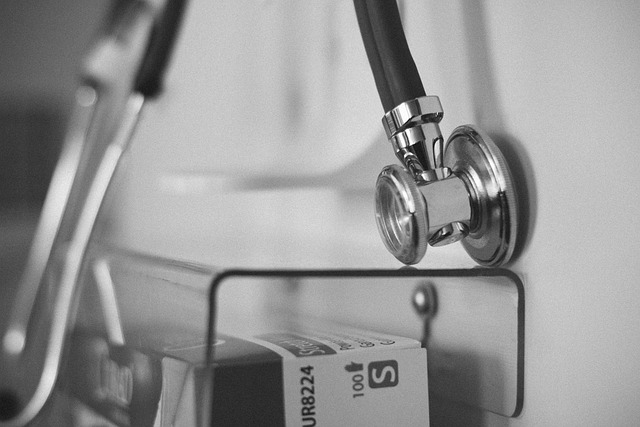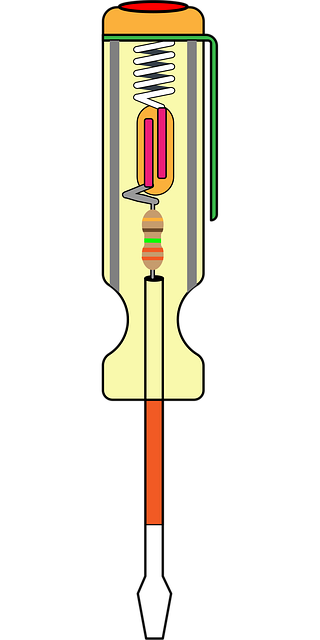Evaluating patient history and symptoms is vital for accurate diagnostics. Healthcare professionals use selecting Diagnostic Tools to identify red flags and underlying causes, choosing from genetic testing, clinical assessment tools, advanced imaging, and laboratory tests based on age, medical history, and symptom severity. In the digital era, remote monitoring devices, online health platforms, and AI analysis revolutionize diagnostics, enhancing patient care, especially for chronic conditions and early health issue detection. Specialist consultations and regular follow-up assessments further improve diagnostic accuracy and personalized treatment strategies.
When faced with a complex medical case, selecting the right diagnostic tools is crucial for accurate patient assessment. This article provides actionable recommendations to navigate the process effectively. Begin by meticulously evaluating the patient’s history and symptoms, which can often reveal key insights. Next, utilize clinical laboratory tests for quantitative analysis. Advanced imaging techniques, such as MRI or CT scans, offer detailed visualizations. Consult specialists for their expert opinions. Regular follow-up assessments are vital to monitor progress and make informed decisions. By combining these diagnostic tools, healthcare providers can significantly enhance diagnosis accuracy.
- Evaluate Patient History and Symptoms
- Utilize Clinical Laboratory Tests
- Employ Advanced Imaging Techniques
- Consider Specialist Consultations
- Implement Follow-up Assessments
Evaluate Patient History and Symptoms

Evaluating a patient’s history and symptoms is an essential step in making accurate diagnostic recommendations. It involves delving into their medical background, exploring personal health risks, and understanding any current or previous conditions. This process helps identify potential red flags and provides clues about the underlying cause of their illness. By gathering detailed information, healthcare professionals can select the most appropriate diagnostic tools to aid in their assessment.
Select Diagnostic Tools should be chosen based on the patient’s unique circumstances, incorporating factors such as age, medical history, and the severity of symptoms. For instance, genetic testing kits offer valuable insights into hereditary diseases, while veterinary clinical assessment tools are indispensable in diagnosing animal health issues. Oncology diagnostic aids, including advanced imaging techniques and specialized laboratory tests, play a pivotal role in identifying cancerous growths and determining their stage.
Utilize Clinical Laboratory Tests

When selecting diagnostic tools, Clinical Laboratory Tests (CLTs) are a fundamental component in any healthcare setting. These tests offer a non-invasive health assessment method, allowing medical professionals to gather crucial information about a patient’s overall well-being. By utilizing CLTs, practitioners can diagnose various conditions, from infectious diseases to metabolic disorders, with remarkable accuracy.
The availability of advanced diagnostic tools has revolutionized medical care, enabling remote patient monitoring devices that facilitate timely interventions. Diagnostic tools for medical professionals have become increasingly sophisticated, offering rapid and precise results, thereby enhancing the quality of patient care. This is particularly beneficial in managing chronic conditions and tracking progress over time using various health assessment tools.
Employ Advanced Imaging Techniques

In today’s digital era, leveraging advanced imaging techniques offers a game-changing approach to selecting diagnostic tools. Online health assessment platforms and telemedicine screening tools equipped with cutting-edge technology enable detailed and accurate visual analysis, often surpassing traditional methods. These innovative solutions allow healthcare professionals to conduct comprehensive dermatological examinations remotely, making timely interventions possible for patients worldwide.
By integrating these advanced imaging techniques, such as high-resolution digital photography, dermoscopy, and even artificial intelligence-driven analysis, medical experts can detect subtle changes in skin lesions that might be missed through standard visual inspection. This precision enhances diagnostic accuracy and facilitates the early detection of potential health issues, ultimately improving patient outcomes with minimal disruption to traditional care models, including the use of dermatological examination devices.
Consider Specialist Consultations

When navigating complex health concerns, considering specialist consultations can significantly enhance diagnostic accuracy and personalized treatment plans. These consultations offer an opportunity to leverage advanced expertise and cutting-edge diagnostic tools. By engaging specialists, patients gain access to specialized knowledge in their specific condition, ensuring more precise evaluations.
One effective approach is to select appropriate diagnostic tools tailored to the patient’s needs. This includes exploring non-invasive health assessment tools, mobile health (mHealth) apps, and remote patient monitoring devices that facilitate continuous tracking of vital signs and health metrics. These technologies enable proactive health management and provide valuable insights for healthcare professionals, further supporting informed decision-making in treatment strategies.
Implement Follow-up Assessments

Implementing regular follow-up assessments is a vital step in ensuring accurate and actionable diagnostic recommendations. After an initial evaluation using carefully selected diagnostic tools like ophthalmic diagnostic instruments or environmental health monitors, it’s crucial to monitor patient progress and make adjustments as needed. These subsequent assessments can reveal subtle changes that might have been missed at the outset, especially when dealing with chronic conditions where digital diagnostics play a significant role in tracking disease progression over time.
By incorporating these follow-up appointments into the treatment plan, healthcare providers gain valuable insights to refine their diagnostic strategies. It allows for personalized care, as each patient’s response and recovery can vary. This proactive approach enables timely interventions and improves overall patient outcomes, demonstrating the importance of a comprehensive diagnostic process that extends beyond a single assessment.
When faced with a complex medical case, selecting the right diagnostic tools is crucial for reaching accurate actionable recommendations. By meticulously evaluating patient history and symptoms, utilizing clinical laboratory tests, employing advanced imaging techniques, considering specialist consultations, and implementing follow-up assessments, healthcare professionals can navigate this process effectively. These strategies ensure a comprehensive evaluation, leading to more informed decisions and ultimately, improved patient outcomes.
